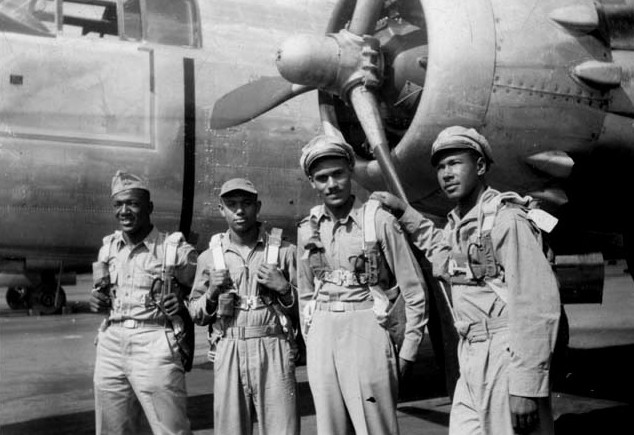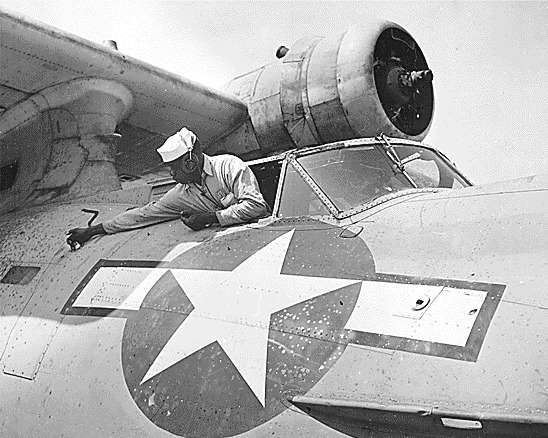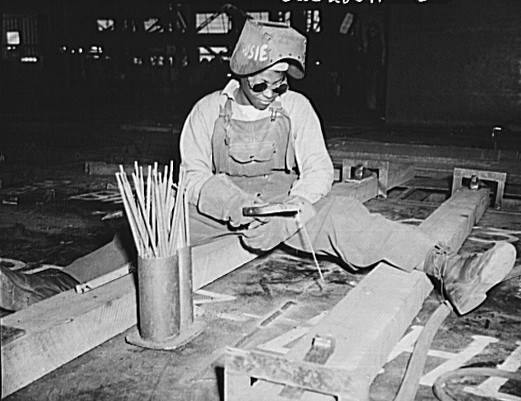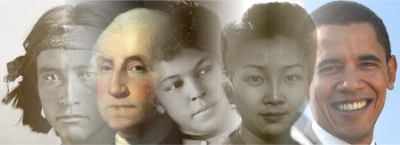
The Denver Public Library's Blair-Caldwell African American Research Library,
call #: ARL-214. |
Like in previous American wars, African Americans, both women and men, had to fight to be allowed to serve in World War II. For example, black men were not allowed to be pilots and black women were not allowed in the nursing corps--though there was an accute shortage of nurses. Women and men fought throughout the war to be able to serve their country and their fellow men in both these capacities. Black men succeeded with the creation of the Tuskeegee Airmen. Black women succeeded when Mable Staupers convinced the armed forces to allow black women into the nursing corps.
In this image, John Mosely (left) a Colorado State football hero poses with other Tuskeegee airmen in 1944.
|
In addition to sparking civil rights battles in the armed forces, World War II sparked a second Great Migration. African Americans moved from rural and southern areas to urban centers, many of which were in the West. They moved to take advantage of work in factories producing vital equipment for the war. In this image, mechanic Alvin V. Morrison works doing an overhaul of an airplane in Seattle, Washington on April 27, 1944.
|

National Archives, local identifier # 80-G-233274
|

Photo by E.F. Joseph. Library of Congress, neg #: LC-USW3-028671-C.
|
Black women, too, like black men and white women found opportunities during the war. In this 1943 picture,
welder-trainee Josie Lucille Owens helps construct the Liberty ship SS George Washington Carver. The Kaiser shipyard where she worked was in Richmond, California, a town created by World War II.
Many African Americans faced the end of the war with hope for a safer, freer, and more prosperous future. After all they had participated like all Americans in "making the world safe for democracy" ... NEXT
|
|

